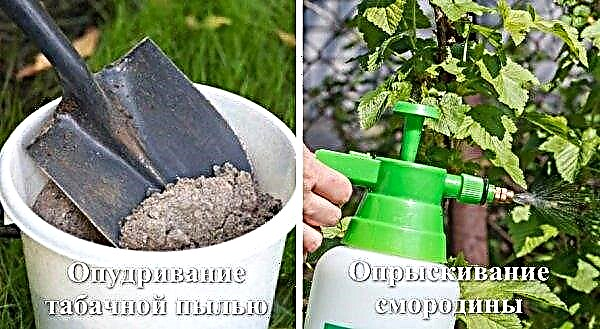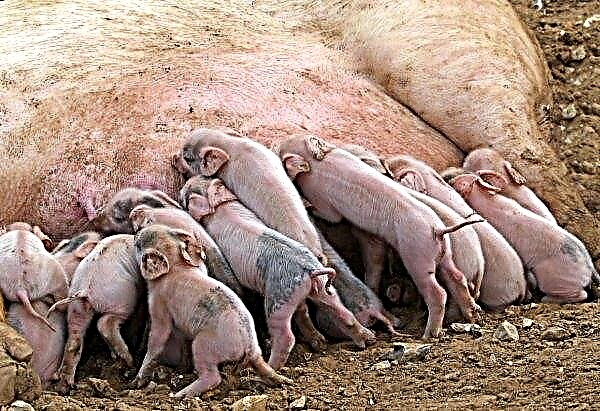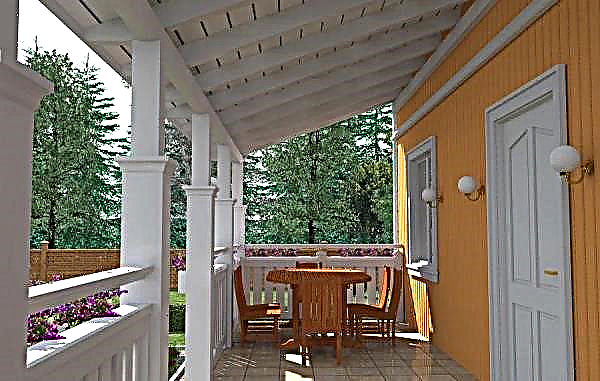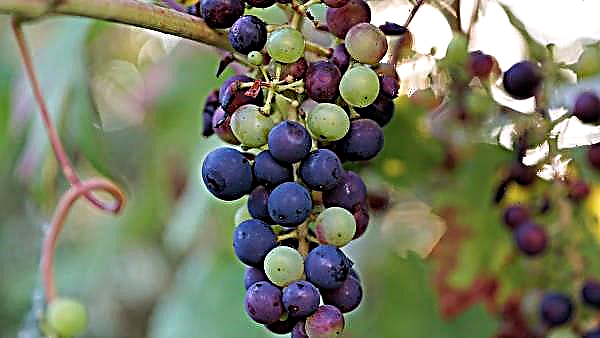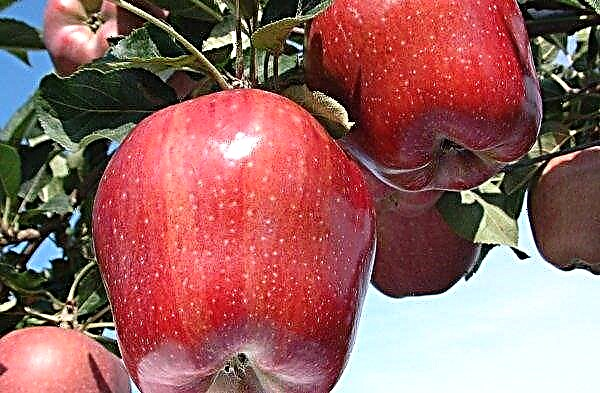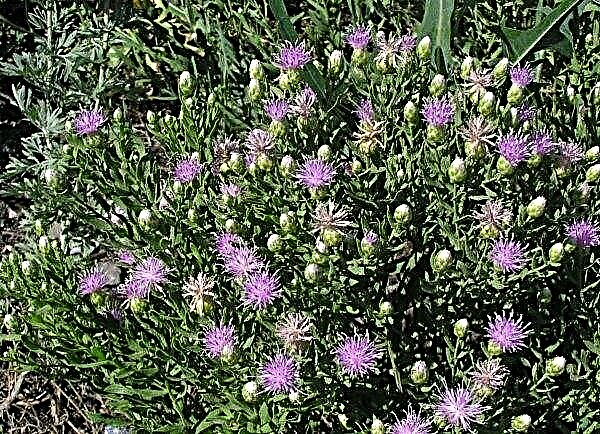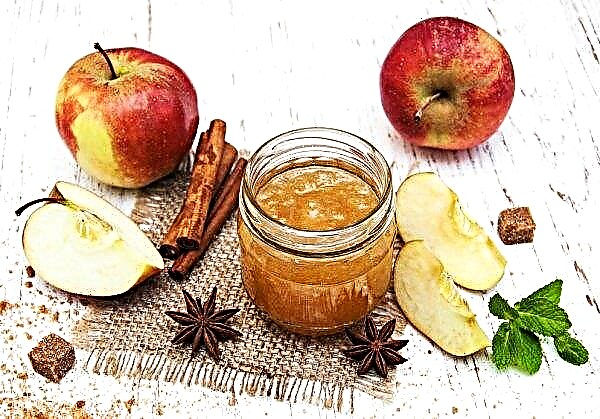A bright green neat lawn near the house is the dream of every owner of a summer cottage. Caring for a plant carpet is extremely simple and does not require a lot of time and effort. The only thing that can overshadow the joy of contemplation of a decorative lawn is the presence of weeds on it. These plants not only spoil the aesthetics, but also have a negative effect on the grass cover, so it is important to take measures to eliminate them in time.
Causes of weeds
Weeds are called plants that are not cultivated by people, but grow spontaneously. Often they clog agricultural land, are found in the fields, within private land, where they inhabit gardens and lawns.
- The appearance of weeds may be due to improper care of the lawn, in particular:
- lack of nutrients, which leads to weakening of the grass cover and the appearance of weeds;
- placement of the site in a dark place;
- an excess of moisture in the soil cover - such an environment is preferred by mosses and other weed crops;
- excessively short mowing of grass.
Important! A common cause of weeds is the presence of their seeds in the imported soil. They can stay in the ground for many years and germinate under favorable conditions.
Weed grass brings significant harm primarily due to the fact that its powerful root system absorbs a huge amount of water, significantly reducing soil moisture. Also, some weeds “stick” to the roots and stems of cultivated species and literally extract water and biological substances from them, which often leads to the death of the latter.
 Many weeds grow very much, obscuring the surrounding "necessary" plants, darken the crops, lower the temperature of the soil.
Many weeds grow very much, obscuring the surrounding "necessary" plants, darken the crops, lower the temperature of the soil.
In addition, they become a hotbed of harmful microorganisms and insect pests, and such a neighborhood will not bring anything good to cultivated species. And, of course, it should be noted that weed grass significantly spoils the aesthetic attractiveness of the lawn when, against the background of a neat green grass, the processes of horsetail or wheat grass randomly rise.
- Having considered how much damage weeds can do, it is fair to say that, growing in moderation, they can also bring benefits, namely:
- many weeds are good honey plants;
- provide favorable conditions for beneficial representatives of the entomofauna, becoming for them a source of food;
- individual species are able to signal changes in the soil. For example, if a plantain or horsetail has begun to grow actively, then the acidity in the soil has to be increased, which needs to be neutralized.
- The appearance of weeds blooming in autumn will indicate a lack of humus in the soil, its poor fertility;
- weeds cut before seeds appear are an excellent ecological fertilizer - they are added to compost and used for mulching;
- many species can be infused and used as foliar top dressing;
- some weeds have excellent medicinal properties (horsetail, plantain, buttercup, etc.), which is why they are used in folk medicine.
Weed species
In the world there are more than 30 thousand species of weed grass. Among the variety there are toxic specimens containing toxic substances, as well as medicinal plants. There is no unified classification of weed grass, but its representatives are divided into groups according to certain criteria.
There are parasitic and parasitic plants. The first group includes weeds, which necessarily need proximity to other representatives of the flora, helping them to eat, since they do not have their own roots and leaves. Non-parasitic - those that have their own green mass, root system and can grow without the help of other cultures.

Weed grasses are also divided into annual and perennial. Youngsters propagate by seeds, so fighting them is much easier. Perennial weeds can propagate in different ways, grow safely in one place for up to 4 years, throwing out new shoots every year.
To destroy such a plant, it is necessary to cut off not only the aerial part, but also completely tear out the root, which has a special survivability. The presence of certain weed crops is characteristic of certain land plots. For example, in the garden you can often find wood louse, purslane, field bindweed, etc.
Did you know? One dandelion outlet during the summer can produce up to 16 thousand parachute seeds.
The following weeds can grow on a grassy lawn or flowerbed:
- Ivy-shaped budra. This perennial creeping plant has stems up to 70 cm long, which can form a dense carpet. From April to August, numerous blue-violet flowers bloom on it. The culture has an attractive appearance and a pleasant mint smell. Some gardeners specifically grow it to create a decorative vegetation cover. Besides, Budra is an excellent honey plant, and the delicacy obtained from it has a rich taste and healing properties. If you prefer to have an even green lawn on the site, you need to get rid of the weed at its first appearance, since the stems spread on the ground give a lot of new roots, so the plant grows quickly.
 You need to remove the budra with the root, it is desirable to treat the soil with herbicides.
You need to remove the budra with the root, it is desirable to treat the soil with herbicides. - Moss. Weed perennial adversely affects the growth of cultivated plants, depriving them of nutrients and water. It spreads very quickly, multiplying by spores. Moss is easily removed from the plot mechanically using a rake, since its roots are superficial. Soil treatment also helps with iron sulfate, and as a preventive measure it is necessary to make soil punctures with a pitchfork or other tool to a depth of 10 cm - this will help establish moisture and air exchange in the soil.
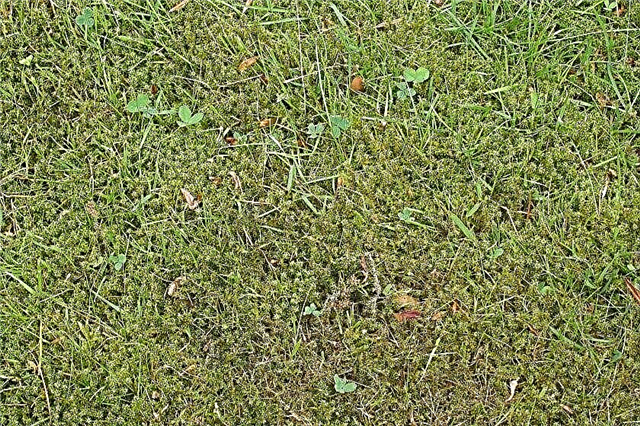
- Dandelion. Everyone is familiar with this representative of the flora. The placers of yellow flowers on the spring lawn look quite impressive. But if such a "beauty" appeared on your lawn, it is better to get rid of it as quickly as possible, otherwise it will fill the whole space. Fighting dandelion is very difficult, as it has incredible vitality. If you cut only the green mass, it will germinate again, and removing the fragile, but long meter root of the plant is not so simple. Most often, herbicides are used to combat it.
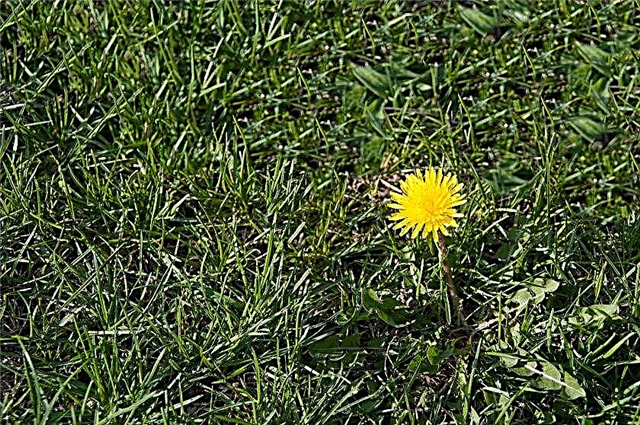
- Wheat grass creeping. This is the most common type of weed grass with a strong branched root system, due to which the plant very quickly spreads over the site. In just a few months, wheat grass is able to cover a large area. The grass belongs to the family of cereals, characterized by long stems and narrow leaves. Wheat grass easily tolerates any weather disasters, can grow on different types of soil.

- Horsetail. Malicious weed most often penetrates the lawn with imported soil from peat bogs, where it grows safely. The danger of the neighborhood with such a plant is that it has very sprawling rhizomes that absorb all the nutrients and moisture from the soil. In this case, the roots can go into the ground to a depth of 1 m, which is why it is quite difficult to pull them out. You can try to get rid of the weed by liming the soil, using drugs such as chalk, dolomite flour, ash.
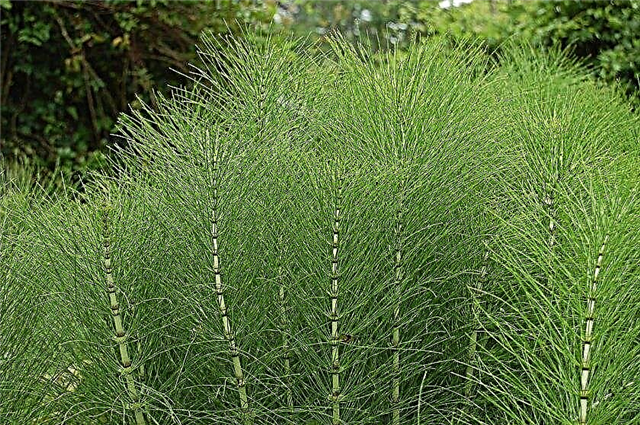 Greater effect is obtained by the use of herbicides of general-consuming effect, such as, for example, Glaysel.
Greater effect is obtained by the use of herbicides of general-consuming effect, such as, for example, Glaysel. - Creeping buttercup. Creeping stems of this weed can reach a length of 2 m. During flowering, they are covered with small, up to 2 cm in diameter, yellow flowers. With its branches, the plant literally braids around the cultural plantations, suppressing their growth. Perennial breeds in many ways, including shoots. In this case, one stalk is able to produce up to 120 seeds, after shedding of which new shoots appear. Gloves must be worn during weeding, as all parts of the plant are poisonous.
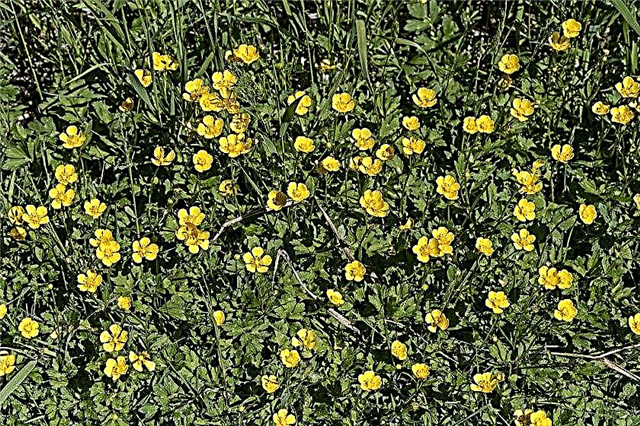
- Bluegrass. On the lawn you can’t immediately notice the appearance of this representative weed. Its seedlings are inconspicuous, and the size of an adult plant is small, however, during its flowering on the site ugly islands of weed grass will be clearly visible. Bluegrass especially loves shady areas with high humidity. The plant belongs to annuals. .
 Getting rid of it is quite simple - once you uproot the culture
Getting rid of it is quite simple - once you uproot the culture - Velcro. A two-year-old weed plant up to 80 cm high has straight stems branched to the top and small blue flowers. Velcro obscures the soil, draws nutrients from it, and disrupts air and water regimes. In addition, the plant often becomes a habitat for harmful insects. Weed must be removed with the root. Chemical treatments help.

- Plantain. This plant is known to many as a medicinal one - applying its leaves to wounds can stop bleeding and have a disinfecting effect. However, to prevent the growth of plantain on the lawn is not worth it. Powerful bushes easily make their way even in the thickest dense grass. Culture multiplies rapidly.
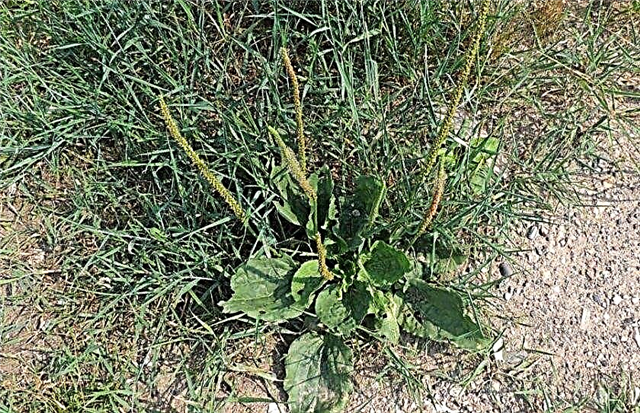 To eliminate plantain, use a special tool - a garden fork, with which you can tear out the weed with the root.
To eliminate plantain, use a special tool - a garden fork, with which you can tear out the weed with the root.
Ways to fight
There are quite a few ways to control weeds. Depending on the type of weed grass, its vitality, it is possible to use both chemical preparations and the use of agrotechnical methods for extermination. Often, gardeners use folk methods, which often give good results.
Chemicals
The use of chemicals is not for every gardener, but sometimes this is the only way to get rid of the annoying representatives of the flora, in particular those that have a deep root system. The danger lies in the fact that very powerful drugs, such as Agrokiller, can be involved in processing.

The tool can destroy even the most tenacious representatives of weed grass, but, at the same time, it can have a negative effect on insects and other living creatures that live within the lawn. Although, paying tribute to the progress, it is worth noting that the herbicides produced today in a huge assortment are much harmless to those that were used 30–40 years ago.
Herbicides are classified according to various criteria. There are drugs of continuous or selective action. The first group includes those that have the ability to destroy plants of all classes. Means of selective action are toxic only for certain crops, and they are the most popular.
Important! The constant use of one herbicide is addictive in plants, so the drugs should be alternated.
Herbicides are also distinguished by the method of penetration: there are contact species that affect only those plant fragments that fall on, and systemic ones that move along the weed, acting on all its organs.
The most effective drugs are:
- Zencor Liquid - penetrates the weed through the leaves and roots. The drug forms a film on seeds located in the soil, so that they are not capable of germination.
- "Tornado" - It is able to destroy about 150 species of weeds, even the most malicious, such as wheat grass, loach, etc. It is the most harmless among its counterparts. Even a small drop of the agent, falling on the leaves, penetrates the root and makes it wither;
- Butizan - penetrating the soil, poisons the roots of weeds, is widely used for the extermination of annual specimens, especially pronounced activity is observed against cereal grasses;
- Treflan - destroys most types of weed crops, provides long-term protection against them throughout the growing season. The tool prevents the germination of seeds by acting on their embryos;
- Gardo Gold - Combined herbicide, highly effective against a wide range of weeds.
Video: How to remove weeds in 1 minute with your own hands
Tillage process
Getting to the soil with a particular herbicide, carefully read their description and instructions for use. Means can be intended for surface spraying or for direct application to the soil with subsequent closure.
Check out

The best effect can be achieved if the soil is moistened before treatment.. Clearly follow the recommendations regarding the concentration of solutions. Small doses will be ineffective, and too large can harm the lawn grass.
To destroy the "point" weed on the lawn, the drugs are injected in the form of an injection under the root of the plant. If you plan to plant a lawn, you need to prepare the soil in 3-4 months. The site is abundantly watered with a continuous herbicide.
The vegetation on it will begin to dry out after about 7-10 days. After 2 weeks, you need to dig the area, removing weeds and their roots. After 1–1.5 months, new weed shoots can germinate here, so treatment should be repeated, again clearing the area.
 After 30-40 days, you can start sowing the grass.
After 30-40 days, you can start sowing the grass.
Folk methods
Traditional methods sometimes seem completely absurd, but practice shows that most of them are very effective. For instance, a way to kill weeds with alcohol. Seeds of weed grass occur in the soil and can germinate at different times, "disappointing" the owners with their appearance all year round.
To avoid this, you need to prepare the product by mixing 1 liter of vodka with 10 liters of water. The resulting liquid is abundantly sprayed on the soil. Alcohol stimulates the emergence of seedlings, as a result of which weed germinates almost simultaneously and the gardener can only get rid of it. Such simultaneous destruction can clear the site for the next 3-4 years.
Did you know? Ants in the process of life release acid, which is a natural herbicide.
Effectively destroys weed vinegar solution, acting no worse than herbicides. To cook it, you need to mix table vinegar and water in a ratio of 1: 1. It is also recommended to add 20 g of citric acid and 20 g of alcohol. The resulting mixture is sprayed with weeds, after which they quickly die.
Soda solution also gives a good result., which is often used not only for the destruction of weeds, but also in the fight against fungal diseases, powdery mildew. It is necessary to dilute in 5 liters of water 2 tbsp. l soda and 30 g of grated laundry soap. The mixture must be mixed well and filtered.
 Another useful recipe is based on a high concentration of acetic acid. 5 ml of liquid soap and 150 g of salt are diluted in 1 liter of table vinegar. Spraying with this explosive mixture gives an excellent result.
Another useful recipe is based on a high concentration of acetic acid. 5 ml of liquid soap and 150 g of salt are diluted in 1 liter of table vinegar. Spraying with this explosive mixture gives an excellent result.
Agrotechnical methods
One of the surest ways to deal with the rhizomes of perennials is digging and plowing the soil with the removal of the underground parts of weeds manually. But this method is only good if you only intend to plant a lawn. If the grass cover is already formed, digging it will destroy and will have to be sown again.
Lawn grass needs to be mowed in time, while you can not cut it very short, creating the conditions for the free growth of weed grass. It is also recommended to comb the lawn with a rake - this will help to identify and destroy the creeping weed grass. A significant obstacle to the development of weeds is the mulching of the soil. To do this, you can use dark non-woven material or natural components: sawdust, mowed dried grass, wood bark, wood chips, etc.
Choosing a favorable place for the lawn, as well as observing the rules of agricultural technology will help minimize the risk of weeds. If these uninvited "guests" appeared on the site, proceed with their destruction immediately, so that the beautiful lawn would please with its decorativeness for many years.

 You need to remove the budra with the root, it is desirable to treat the soil with herbicides.
You need to remove the budra with the root, it is desirable to treat the soil with herbicides.


 Greater effect is obtained by the use of herbicides of general-consuming effect, such as, for example, Glaysel.
Greater effect is obtained by the use of herbicides of general-consuming effect, such as, for example, Glaysel.
 Getting rid of it is quite simple - once you uproot the culture
Getting rid of it is quite simple - once you uproot the culture
 To eliminate plantain, use a special tool - a garden fork, with which you can tear out the weed with the root.
To eliminate plantain, use a special tool - a garden fork, with which you can tear out the weed with the root.

